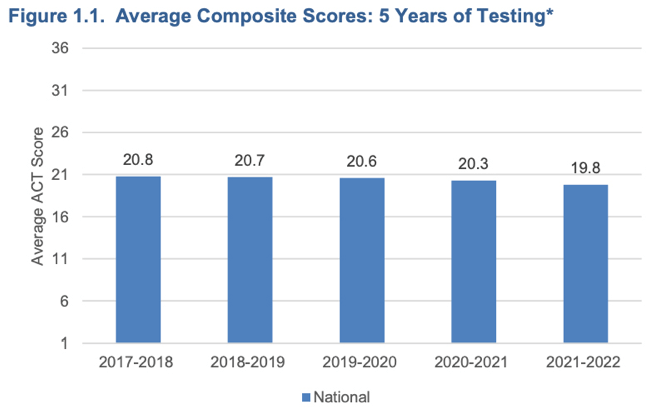Riya Shankaran ’26
In a Town Hall meeting with the EA community on February 8, the combination of behavioral issues and academic struggles was a key topic of discussion that some students face in the aftermath of the COVID-19 pandemic.
Head of Upper School Michael Letts does not see this phenomenon as a “crisis,” but says the Upper School is seeing a “larger number of students struggling with stress, anxiety, and we also see a larger number of students that need a little additional academic support coming into the Upper School.”
Faculty have also considered the issue, and, per Letts, they attribute the academic and behavioral challenges to the current Upper School students’ situation “in the throes of COVID at really formative years,” acknowledging that many current 9th grade students who are new to EA may have been in public school during the pandemic and “may not have actually been in a classroom for over a year.”
In meetings with the Association of Delaware Valley Independent Schools, Letts learned that other schools in the area are experiencing the “same concerns around emotional health [and] around the transition out of COVID, so this is not unique to EA.”
Although EA has not been tracking any post-pandemic academic data and Letts’ statements are observational, the National Assessment of Education Progress of the U.S. Department of Education, also known as “The Nation’s Report Card,” has published the most comprehensive national data set, indicating an academic decline.
According to U.S. News’ October 2022 article, “Pandemic Prompts Historic Decline in Student Achievement on Nation’s Report Card,” a study conducted on 4th and 8th graders demonstrates a significant drop in students’ average points on math and reading assessments in the U.S. “The results show the profound toll on student learning during the pandemic, as the size and scope of the declines are the largest ever in mathematics,” says Commissioner of the National Center for Education Statistics Peggy Carr in the article. The National Center for Education Statistics is the research section of the U.S. Department of Education.
The ACT college admissions exam provides further data suggesting a post-pandemic academic decline. According to The Wall Street Journal’s “ACT Test Scores Drop to Lowest Levels in More Than 30 Years,” test scores for the graduating class of 2022 fell to the lowest level in more than three decades. Test takers scored an average of 19.8 out of 36, which is the first time the average has dropped below 20 since 1991.

Photo courtesy of the74million.org
Letts states that EA does not track data around behavioral concerns either. He explains, “The number of students visiting our counselors or [how many students] have expressed with their advisors or teachers they are having trouble” is not monitored. According to Letts, there has not been a significant increase in disciplinary issues, but some younger Upper School students can struggle “to understand the boundaries between class behavior and what they may have been doing during COVID.” Virtual learning and “being in your bedroom and going to class is just very different than being here on campus and interacting with your peers and being able to participate in programming and play sports and do the performances and be a part of the music ensembles.”
Zachary Richards, Form Dean for the Class of 2026, agrees with Letts that more students have required academic support recently compared to before the pandemic. He asserts that it is “not a huge jump, but it definitely seems like there are more students that need support,” and that some students do not have “fully developed [study] skills.”
Similar to Richards, Bella Bin ’24 also believes that study skills may be a reason for academic struggles following the pandemic. “Online school was definitely a lot less rigorous than in-person school,” she remarks. Bin comments that most of her 9th grade assessments were open-note, which “may have motivated students not to study as much, and that could have carried on into future grades like junior year currently … [students] may not be used to actively studying days in advance for assessments.”
Discussing the implications of virtual learning on educational quality during the pandemic, Richards adds, “Students were not able to learn as well because they didn’t always have a teacher there to support them and be able to know when they needed support.” As a by-product, he also notes, “Stress seems to be a little higher than usual for a freshman class.”
New student Maggie Sgaramella ’26 explains that because she was new to EA Upper School, she “was not prepared at all. In general, EA is a very academically challenging school, which is something I was excited about, but thinking back to other kids who were [in my old school], I do not think they would handle it well.”
Richards stresses that the academic resources at EA provide a key strategy to help students overcome academic challenges. He says, “9th grade workshop class is a great class led by great teachers that support kids and teach them how to develop these good habits that will help them across the board in all their classes.” Other academic support systems that Richards wants students to seek out include homework helper, morning math help on Monday, Wednesday, and Friday, and academic coaches who can work with kids individually.
Another new student Lucy Charlton ’26 concurs with Richards that EA has “lots of helpful teachers, homework helpers, and workshops” to provide Upper School students with academic support.
Letts believes that the pandemic was the main cause of the current academic and behavioral issues that students are facing. He explains, “Some of what we’re seeing is due to the fact that [students], no matter what [their] age, went through a period of 18 to 24 months where things were simply not normal.” Letts, along with the EA faculty, is “trying to evaluate that, meet the students where they are, and help fill in any gaps that may have appeared.”